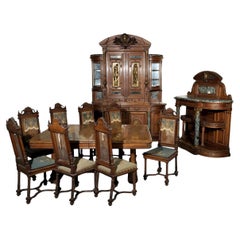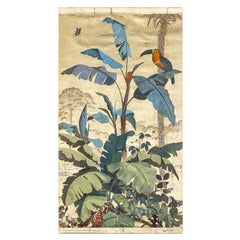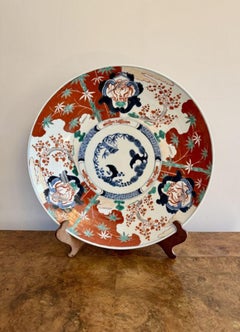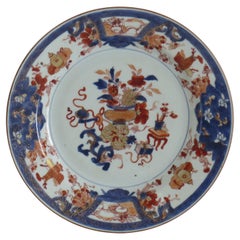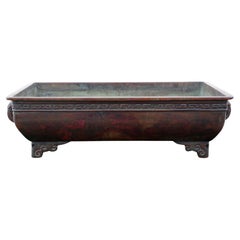Europe - Asian Art and Furniture
1890s French Renaissance Revival Antique Europe - Asian Art and Furniture
Marble, Bronze
20th Century French Europe - Asian Art and Furniture
Gold Leaf
Early 20th Century Japanese Europe - Asian Art and Furniture
Ceramic
Early 18th Century Chinese Chinese Export Antique Europe - Asian Art and Furniture
Porcelain
19th Century Antique Europe - Asian Art and Furniture
Bronze
21st Century and Contemporary Hong Kong Modern Europe - Asian Art and Furniture
Brass, Enamel
19th Century Indian Antique Europe - Asian Art and Furniture
Wood
Mid-19th Century British Victorian Antique Europe - Asian Art and Furniture
Boxwood, Walnut
16th Century Chinese Ming Antique Europe - Asian Art and Furniture
Elm
1870s French Renaissance Revival Antique Europe - Asian Art and Furniture
Marble, Bronze
Late 19th Century Chinese Qing Antique Europe - Asian Art and Furniture
Porcelain
19th Century Chinese Qing Antique Europe - Asian Art and Furniture
Ceramic
15th Century and Earlier Timorese Antique Europe - Asian Art and Furniture
Stone, Metal
Early 19th Century Early Victorian Antique Europe - Asian Art and Furniture
Copper
1980s Victorian Vintage Europe - Asian Art and Furniture
Stone
1960s Italian Mid-Century Modern Vintage Europe - Asian Art and Furniture
Metal
Early 19th Century Victorian Antique Europe - Asian Art and Furniture
Copper
Early 20th Century Burmese Europe - Asian Art and Furniture
Wood
Late 19th Century Chinese Antique Europe - Asian Art and Furniture
Wood, Mother-of-Pearl
Early 20th Century Japanese Edo Europe - Asian Art and Furniture
Wood
1940s Danish Other Vintage Europe - Asian Art and Furniture
Porcelain
21st Century and Contemporary Burmese Europe - Asian Art and Furniture
Bronze
19th Century Japanese Antique Europe - Asian Art and Furniture
Coral
Late 19th Century German Early Victorian Antique Europe - Asian Art and Furniture
Parchment Paper
2010s Japanese Europe - Asian Art and Furniture
Ceramic
Early 19th Century Japanese Edo Antique Europe - Asian Art and Furniture
Gold Leaf
Mid-20th Century Japanese Showa Europe - Asian Art and Furniture
Bronze
1920s Chinese Chinese Export Vintage Europe - Asian Art and Furniture
Bamboo
Early 19th Century English Gothic Revival Antique Europe - Asian Art and Furniture
Wrought Iron
Late 19th Century Japanese Antique Europe - Asian Art and Furniture
Bronze
19th Century Burmese Antique Europe - Asian Art and Furniture
Wood
Early 19th Century British Georgian Antique Europe - Asian Art and Furniture
Leather, Wood
19th Century Edo Antique Europe - Asian Art and Furniture
Porcelain
18th Century Chinese Antique Europe - Asian Art and Furniture
Porcelain
Early 20th Century Europe - Asian Art and Furniture
Brass
18th Century Chinese Chinese Export Antique Europe - Asian Art and Furniture
Porcelain
Early 20th Century Chinese Export Europe - Asian Art and Furniture
Fruitwood
Late 17th Century Chinese Qing Antique Europe - Asian Art and Furniture
Porcelain
Late 19th Century Japanese Meiji Antique Europe - Asian Art and Furniture
Ceramic, Earthenware, Pottery
1850s Antique Europe - Asian Art and Furniture
Kingwood
1880s Chinese Antique Europe - Asian Art and Furniture
Enamel
Late 19th Century Chinese Ming Antique Europe - Asian Art and Furniture
Rattan, Fruitwood
Late 19th Century Chinese Chinoiserie Antique Europe - Asian Art and Furniture
Gold Leaf
Early 20th Century Indonesian Europe - Asian Art and Furniture
Cotton
19th Century Japanese Meiji Antique Europe - Asian Art and Furniture
Paper
Mid-20th Century Burmese Art Deco Europe - Asian Art and Furniture
Teak
19th Century Chinese Antique Europe - Asian Art and Furniture
Amethyst
Late 19th Century Chinese Qing Antique Europe - Asian Art and Furniture
Celadon
Early 18th Century Chinese Qing Antique Europe - Asian Art and Furniture
Porcelain
Mid-20th Century French Mid-Century Modern Europe - Asian Art and Furniture
Brass
Early 1900s English Antique Europe - Asian Art and Furniture
Mahogany
21st Century and Contemporary Indian Europe - Asian Art and Furniture
Marble
19th Century Indian Antique Europe - Asian Art and Furniture
Silver
Early 18th Century Chinese Antique Europe - Asian Art and Furniture
Porcelain
1930s Chinese Art Deco Vintage Europe - Asian Art and Furniture
Marble
Early 1900s Japanese Meiji Antique Europe - Asian Art and Furniture
Metal, Enamel, Metallic Thread
19th Century Thai Antique Europe - Asian Art and Furniture
Bronze
17th Century Chinese Ming Antique Europe - Asian Art and Furniture
Porcelain
Late 18th Century Japanese Antique Europe - Asian Art and Furniture
Iron
Late 19th Century Japanese Meiji Antique Europe - Asian Art and Furniture
Bronze
Read More
Symbols of Happiness and Rebirth Adorn This Japanese Satsuma Bowl
Decorated with white cranes and the sought-after thousand-butterflies motif, the Meiji-period vessel offers both a celebration of traditional aesthetics and a clear reflection of the era’s appetite for exquisite export pieces.
Chicago’s Pagoda Red Has a Spirited Mix of Asian Antiques and Bold New Art
For 25 years, gallerist Betsy Nathan has leveraged her keen eye and key connections to bring a unique selection of rare finds to the market.
In L.A., Gallerist JF Chen Has Long Championed Eclectic Blue-Chip Design
Now working alongside his daughter Bianca, dealer Joel Chen has presented a most covetable array of antiques, art and contemporary creations for more than 40 years.
12 Calming Spaces Inspired by Japanese Design
From cherry-blossom-adorned walls paired with glamorous lighting to wood-paneled ceilings above checkerboard-patterned chairs, these 12 spaces seamlessly blend Eastern and Western aesthetics.
Rodrigo Rivero Lake’s Mexico City Showroom Is a Museum-Worthy Trove of Spanish Colonial and Asian Antiques
The dealer and curator has spent the past 50 years amassing a collection of exceptional art, furniture and architectural elements that trace the cultural influence of the Spanish empire from Europe to the Americas and beyond.
16 Refined Asian-Inspired Interiors
These spaces exemplify how Eastern elements elevate a home's decor.
